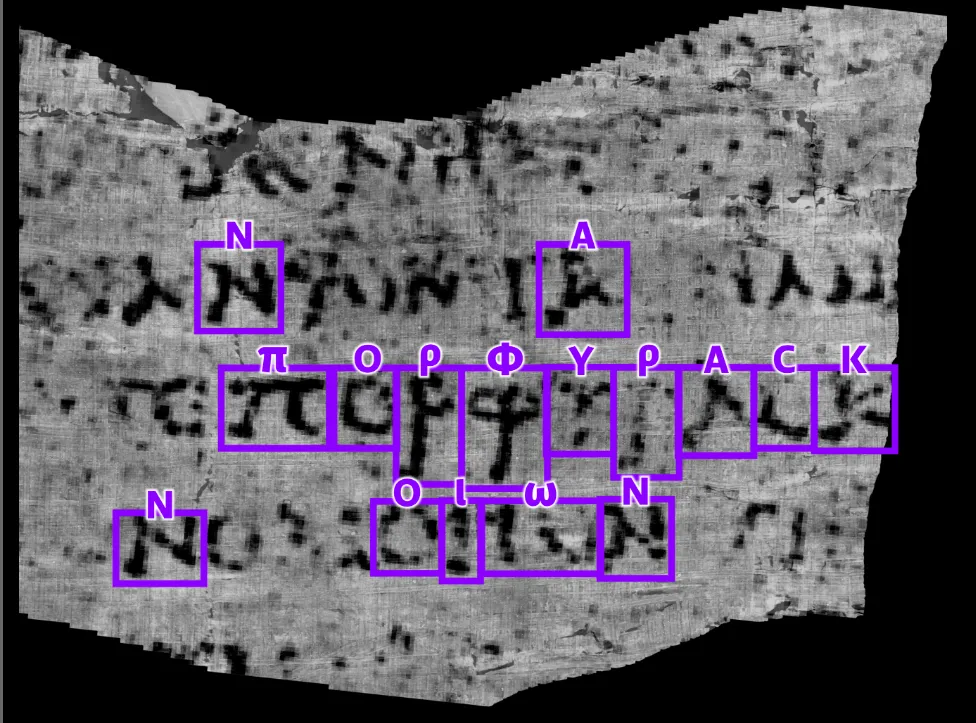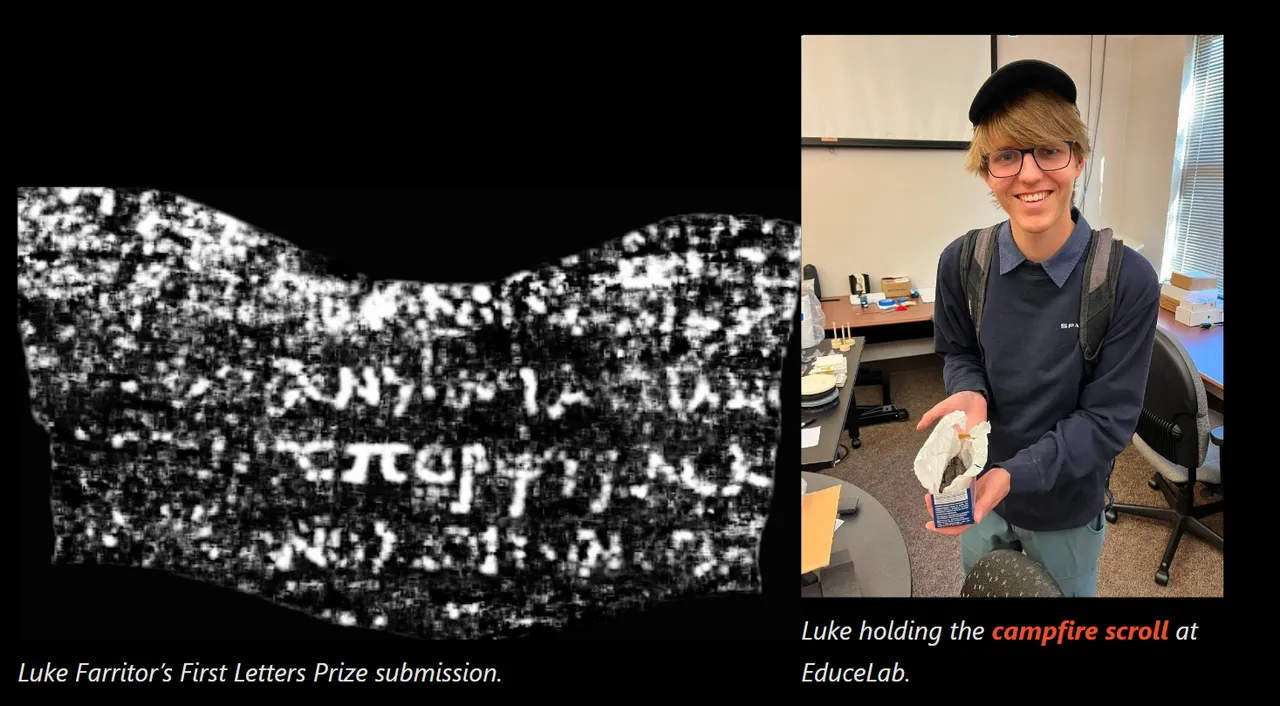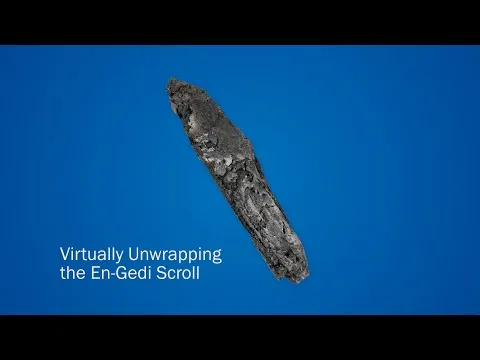Purple
Many months back I said something to @vugtis related to what the Splinterlands land plots will generate. As per the The Secret of Praetoria whitepaper, there are three types of land in Praetoria: Regular, Occupied and Magical. Each of these types will generate different items while farming. Occupied plot generate SPS, which we know, and does have a known present value. Regular plot generate 'grain' the value of that token is unknown right now. Magical plot generates or made you progress towards "Secrects of Praetoria" which is a long term research task of unknown nature, value and definition. This is what I call PURPLE. Vugtis and I discussed we can call it anything we want. If you don't like Purple, call it Brown or Ship or even Simba :)

Indulge me a little bit. What you are seeing above is fascinating and interesting. It is a burned part of a Herculaneum Scroll which was the first scroll to be deciphered this year, after a large library was desctoyed by the eruption of Mount Vesuvius on 79 AD. The first word deciphered by this amazing technology by a 21 year old computer science student Luke Farritor. Whether you can read Greek or not doesn't matter. We all can read 'Pi'! Mind you, these scrolls are 100% carbonized, and rolled up, and they can't be opened or they will crumble. Please watch the video at the end.

The Herculaneum papyri, ancient scrolls housed in the library of a private villa near Pompeii, were buried and carbonized by the eruption of Vesuvius in 79 AD. For almost 2,000 years, this lone surviving library from antiquity was buried underground under 20 meters of volcanic mud. In the 1700s, they were excavated, and while they were in some ways preserved by the eruption, they were so fragile that they would turn to dust if mishandled. How do you read a scroll you can’t open? For hundreds of years, this question went unanswered.
That is until Luke Farritor, a contestant of the Vesuvius Challenge, became the first person in two millennia to see an entire word from within an unopened scroll this August. For that, we are thrilled to award Luke a $40,000 First Letters Prize, which required contestants to find at least 10 letters in a 4 cm2 area in a scroll.
I was fascinated to read about the Vesuvius Challenge. Not only the topic is exciting but the way it was crowd sourced. The Vesuvius Challenge is a scientific research contest that is taking Silicon Valley by storm. It was started by Nat Friedman, the former CEO of GitHub, and Daniel Gross, his investing partner, a founder of Cue, John and Patrick Collison, the founders of Stripe, kicked in some money, as well as people like Toby Lutke, the founder of Shopify, Aaron Levie, one of the co-founders of Box. So basically a whole bunch of tech geeks. The original research idea was by Brent Seales from University of Kentucky. He is one of the forerunner in digital image processing using various AI techniques to read and decipher ancient scroll. The cool part is the fact as opposed to having 5-10 graduate students hammering away at the problem Brent had the vision to create a crowdsource version of the research project thereby essentially employing 1000s of students/researchers/historians together, which made the project infinitely interesting and incredibly fast. They are looking to complete a large part of the project by this December!!
Why can't we do this with Splinterlands? I will be happy to partly fund it. I am sure many other will be ready to do it as well.
City Bus
I call the 'grain' City Bus; you can call it SR-71 Blackbird if you like. It is your choice.


